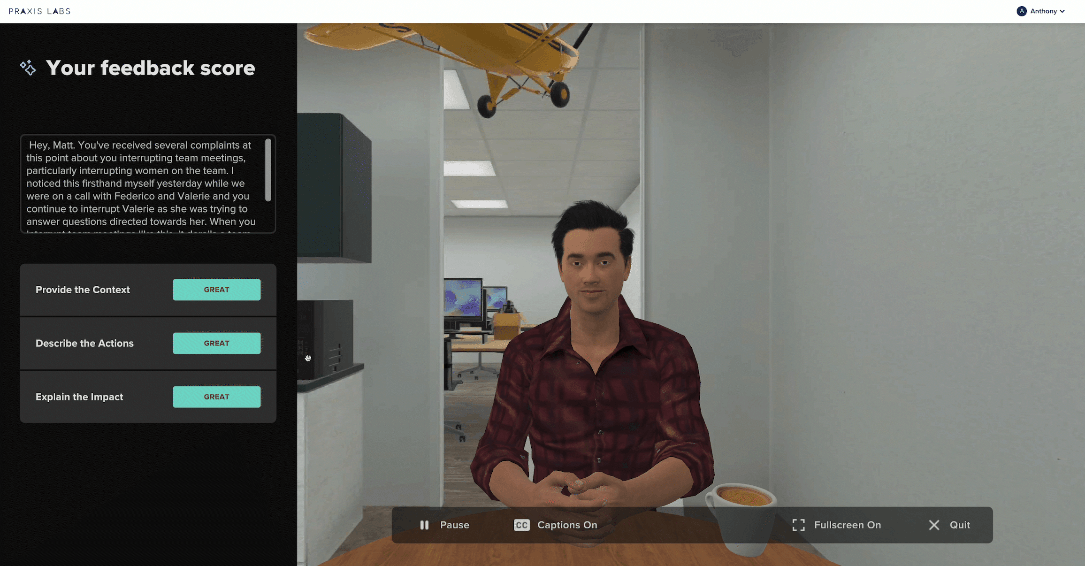- Talent Development
Creating psychological safety in the workplace
In the late 1990s, researcher Amy Edmondson was studying medical mistakes in emergency rooms when she discovered something strange. The best-performing teams in hospitals were reporting making the most mistakes. How could this be?
Further examination revealed that these teams weren’t more prone to error than their counterparts. They were simply more comfortable talking about their mistakes in front of their peers. The link between cohesive, high-performing teams and “psychological safety,” or the shared expectation that you won’t be punished or humiliated for speaking up or making mistakes, was established.
Today, pop culture’s understanding of psychological safety often misses the mark.
“Psychological safety isn’t about being nice” Edmondson explains on a Harvard Business Review podcast. “It’s not about “coziness.” It’s about taking risks, giving candid feedback, openly admitting mistakes and learning from each other. It’s about being able to ask for help when you’re in over your head.”
Psychological safety in the modern workplace
Since Edmondson’s initial report the case for psychological safety’s role in the modern workplace has only grown stronger. Between 2012 to 2014, Google data scientists began a study, Project Aristotle, that used statistical analysis to discover the secret behind its most effective teams.
Psychological safety, again, was the main differentiator. An individual’s perception of the consequences of taking an interpersonal risk directly correlates to their performance. When employees didn’t feel comfortable making mistakes, they were less likely to point out errors and more likely to disengage at work.
The impact of creating psychological safety in the workplace on overall employee engagement should not go unnoticed. Low employee engagement costs businesses hundreds of billions every year.
Yet the reality is that cultures centered on learning, growth, and honesty are not the norm in the modern workplace. And building them is easier said than done. It requires a strong example set by leaders, frequent, transparent communications, and thoughtful incentive structures.
How to promote psychological safety at work
Creating psychological safety in your workplace can help you take advantage of the benefits that equity and inclusion can bring. Here are a few things you can do to get started:
Lead by example
Organizations win when employees at every level feel comfortable making mistakes and learning from them. But in order for this to happen, leaders have to go first. “They have to show that they’re fallible human beings,” says Edmondson.
Asked for an example of a leader who does this well, Edmondson pointed to Pixar Studios’s co-founder Ed Catmull, whose humble, honest communication style created a culture of psychological safety that many credit for the studio’s long record of success. Catmull is famous for admitting “Early on, all of our movies sucked.” He framed the production process as a learning journey. As a result, people felt comfortable raising questions and sharing their opinion before the finished products hit the box office.
Be inclusive in decision-making
When people feel like their opinion is valued, they’re more likely to stay engaged. Soliciting input, opinions and feedback from your teammates is one way to set a two-way communication precedent that encourages people to speak their minds.
Explaining the reasoning for your decisions and acknowledging helpful feedback is another way to improve engagement. Google, for example, teaches managers to call out when team members were contributors to a success or decision.
Prioritize a safe learning environment
Investing in learning & development is one way to show your employees that you value them and want them to succeed. Emerging tech like immersive learning is helping learning leaders build technical and even human skills like empathy, leadership, and communication while creating psychological safety.
Immersive learning puts learners in a simulated environment in which they can make mistakes and fail forward in a safe, judgment-free zone. Look for solutions where learners can replay a learning experience multiple times and understand how their actions impact real-world outcomes. This can be particularly helpful when practicing navigating a difficult conversation, or advocating on behalf of yourself or a colleague when encountering bias.
Don’t forget that building a robust learning culture that encourages employees to grow in their careers starts from the top. Helping employees make space for learning, or working with vendors that offer engaging experiences that embed within a learner’s flow of work, helps make learning frictionless and more impactful.
Managers and leaders can go a step further by connecting skills growth outcomes with professional development goals so that employees understand how learning connects to their career ambitions.
The business case for creating psychological safety in the workplace
A survey of 400 companies with 100,000 employees each cited an average loss of $62.4 million per year because of inadequate communication to and between employees. Directly correlated to psychological safety — this research shows that communication and empathy skills gaps come at a serious material cost. By investing in safe learning environments and prioritizing inclusive decision making, organizations promote a culture of honesty and mutual respect. This supports a psychologically safe and inclusive working environment where employees want to give their all. You can guarantee your teams will be better off for it.









